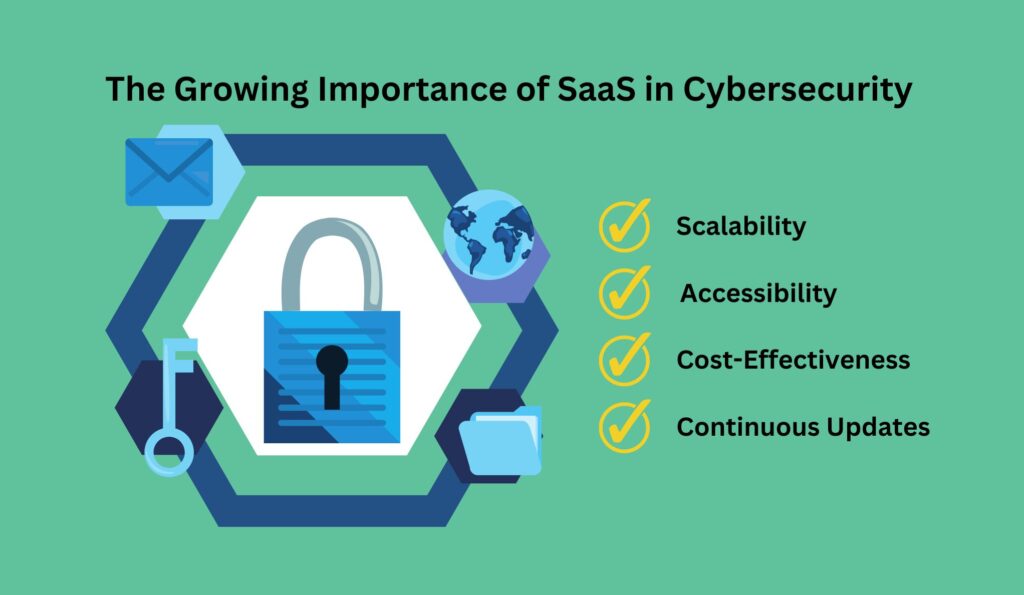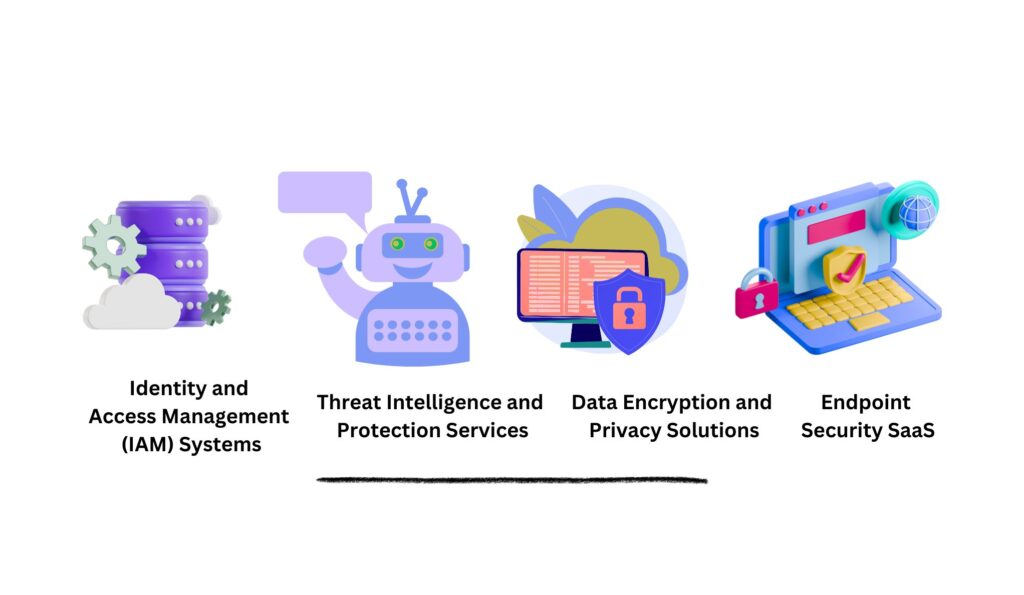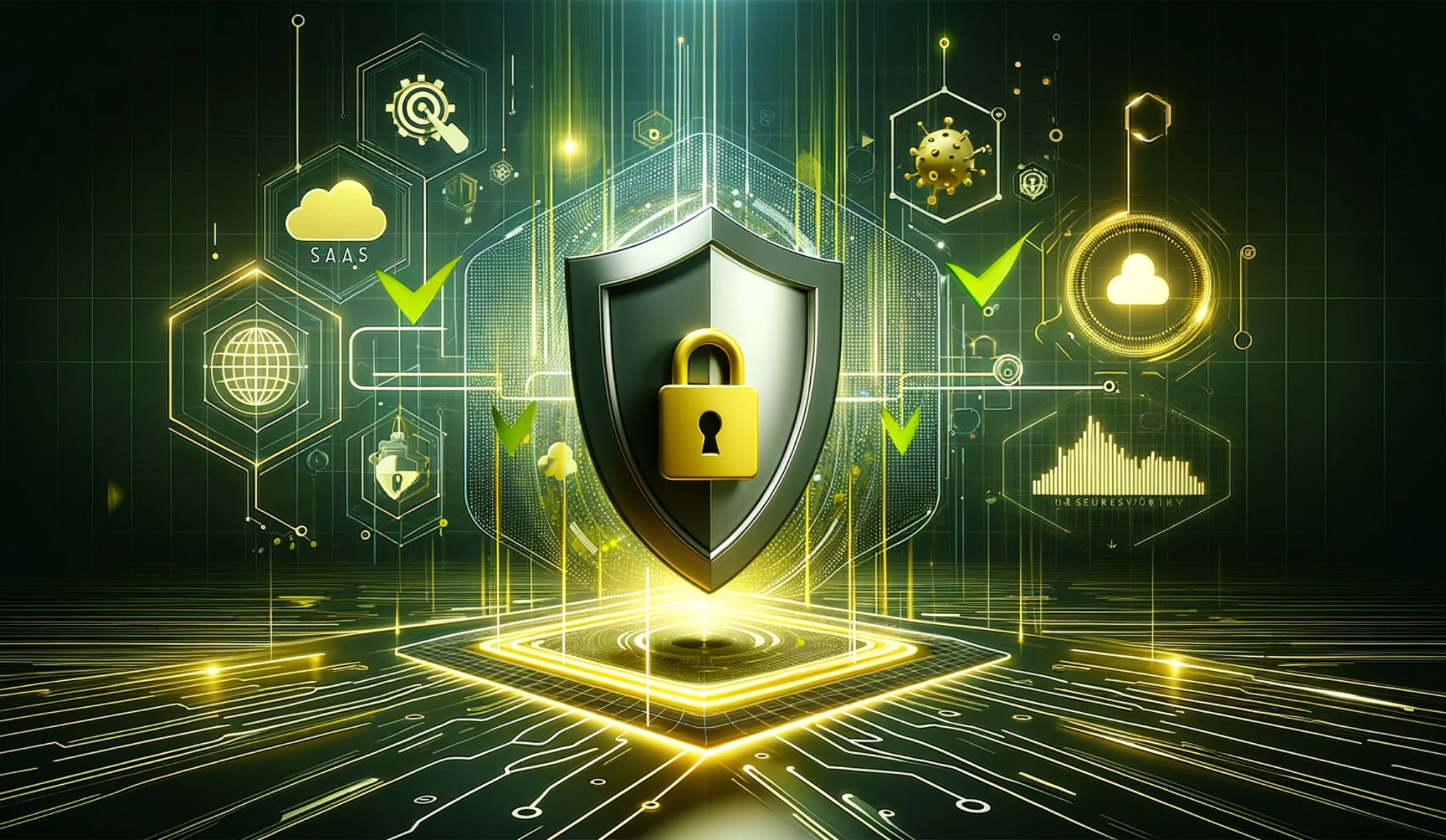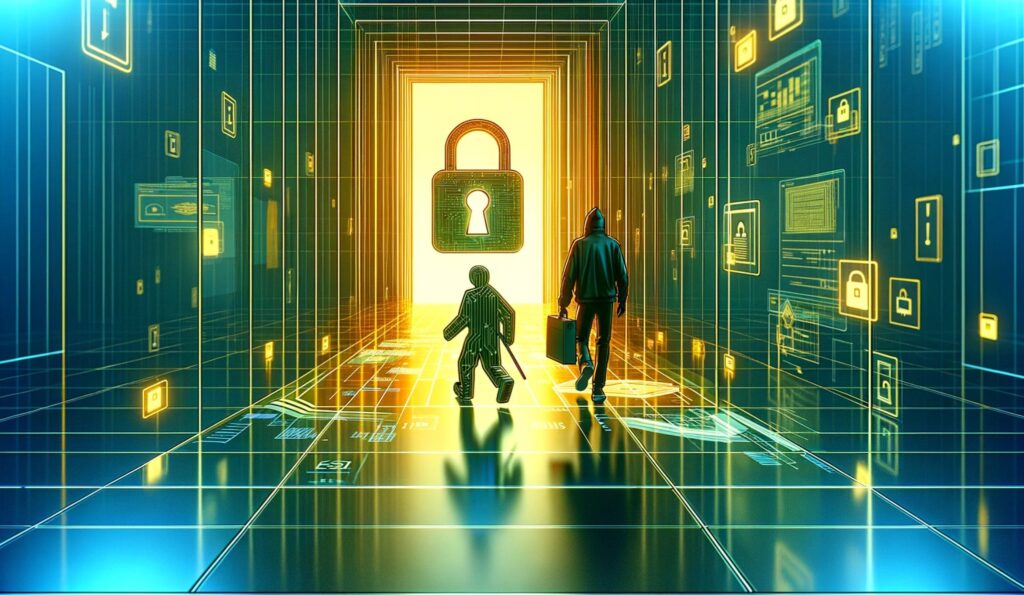Security Software as a Service (SaaS) is an evolving domain in the field of cybersecurity, where security services are delivered over the internet. Unlike traditional security models that involve physical or on-premises hardware and software, Security SaaS is hosted in the cloud. This model enables businesses and individuals to leverage advanced security technologies without the need for extensive infrastructure or technical know-how.
Definition and Scope of Security SaaS
Security SaaS encompasses a wide range of cloud-based security solutions. These include, but are not limited to, threat detection and response, data protection, network security, and identity management services. The key characteristic of Security SaaS is its deployment model – these services are provided over the internet, making them accessible and scalable. This approach allows users to manage various security tasks remotely, with the service provider handling maintenance, updates, and support.
The Growing Importance of SaaS in Cybersecurity
The significance of Security SaaS in the cybersecurity landscape has grown substantially due to the increasing reliance on cloud computing and the escalating complexity of cyber threats. With more businesses moving their operations to the cloud, the demand for robust, flexible, and cost-effective security solutions has surged. Security SaaS offers a solution to these challenges by providing:
- Scalability: Easily adjusts to the changing needs of businesses.
- Accessibility: Enables remote security management, crucial for today’s mobile and dispersed workforces.
- Cost-Effectiveness: Reduces the need for in-house security infrastructure and specialized personnel.
- Continuous Updates: Ensures up-to-date protection against emerging threats without requiring manual intervention.

Understanding SaaS Security Models
The security models employed in SaaS are pivotal in ensuring that cloud services remain secure and reliable. These models dictate how security is implemented, managed, and maintained in a cloud environment. Two primary models are prevalent in the SaaS security domain: Cloud-Based Security Solutions and Hybrid SaaS Security Models.
Cloud-Based Security Solutions
Cloud-Based Security Solutions are designed to provide comprehensive security measures directly over the internet. These solutions are entirely hosted and managed by the service provider. Key features include data encryption, intrusion detection, and identity management. The primary advantage of this model is its simplicity and ease of deployment. Users can access these services from anywhere, as long as they have an internet connection. This model is highly scalable, making it ideal for businesses of all sizes. By relying on the provider’s infrastructure and expertise, organizations can ensure robust security without significant investment in hardware or specialized staff.
Hybrid SaaS Security Models
Hybrid SaaS Security Models combine elements of both cloud-based and on-premises security solutions. In this model, certain components of the security service are managed on-site, while others are hosted in the cloud. This approach offers a balance between the control and customization of on-premises solutions and the accessibility and scalability of cloud-based services. Hybrid models are particularly beneficial for organizations with specific compliance requirements or those that handle sensitive data. By enabling a more tailored security approach, hybrid models allow businesses to align their cybersecurity strategy closely with their unique operational needs and preferences.
Common Types of Security SaaS
In the realm of Security SaaS, there are several key types that play a crucial role in safeguarding digital assets and data. Each type addresses specific security concerns and offers unique solutions tailored to different aspects of cybersecurity. Understanding these common types of Security SaaS is essential for choosing the right protection for your digital environment.

Identity and Access Management (IAM) Systems
Identity and Access Management (IAM) Systems are a foundational component of Security SaaS. These systems control who has access to which resources within an organization. Key functions include user authentication, authorization, and the management of user roles and permissions. IAM Systems ensure that only authorized individuals can access sensitive data and resources, thereby preventing unauthorized access and potential security breaches. They are especially critical in environments where multiple users need to access shared resources, as they provide a secure and efficient way of managing these accesses.
Threat Intelligence and Protection Services
Threat Intelligence and Protection Services are proactive tools in the Security SaaS arsenal. These services gather and analyze data about emerging threats from various sources, helping organizations stay ahead of potential security risks. They offer insights into the latest malware, ransomware, and other cyber threats, enabling businesses to implement preemptive measures. Additionally, these services often include automated protection mechanisms, such as intrusion detection and response systems, which actively shield the organization’s network and data from identified threats.
Data Encryption and Privacy Solutions
Data Encryption and Privacy Solutions are essential for safeguarding sensitive information. Encryption is the process of converting data into a coded form that can only be accessed by those with the decryption key, making it unreadable to unauthorized users. These solutions are vital for protecting data both at rest and in transit, ensuring that sensitive information such as customer details, financial records, and confidential communications remain secure from interception and misuse. With increasing concerns about data privacy, encryption has become a non-negotiable aspect of cybersecurity.
Endpoint Security SaaS
Endpoint Security SaaS focuses on protecting the endpoints of a network, such as computers, mobile devices, and servers, from malicious activities. It includes antivirus and anti-malware protection, firewall management, and other security measures. With the proliferation of devices connecting to organizational networks, especially with the rise of remote work, securing each endpoint becomes critical. Endpoint Security SaaS provides a centralized platform to manage and secure these devices, ensuring that any potential entry point for cyber threats is well-guarded.
Security Challenges in SaaS Environments
While Security SaaS offers numerous benefits, it also brings unique challenges, especially in terms of cybersecurity. These challenges stem from the nature of cloud computing and the complexities of providing security across diverse and often distributed environments. Understanding and addressing these challenges is crucial for maintaining the integrity and security of SaaS applications and the data they handle.
Addressing Security and Privacy in Cloud Migration
Moving to the cloud involves transferring data, applications, and services from on-premises infrastructures to cloud environments. This transition raises critical concerns regarding security and privacy. Ensuring data integrity during the migration process, protecting against data breaches, and complying with data protection regulations are paramount. Organizations must implement robust encryption methods, conduct thorough risk assessments, and establish clear data governance policies. Additionally, choosing a SaaS provider that prioritizes security and offers transparent privacy policies is crucial for a secure cloud migration.
Tackling SaaS Application Security Requirements
SaaS applications, by their very nature, are accessible over the internet, making them potential targets for cyber threats. Ensuring the security of these applications requires a multi-faceted approach. Regular vulnerability assessments and penetration testing are essential to identify and address security loopholes. Implementing strong authentication and access control measures helps in preventing unauthorized access. Moreover, continuous monitoring for suspicious activities and having an effective incident response plan can significantly mitigate the risks associated with SaaS applications.
Managing SaaS OT Cyber Security
Operational Technology (OT) in SaaS environments poses its own set of challenges. OT systems, which control physical devices and processes, are increasingly connected to IT networks, making them vulnerable to cyber threats. The integration of OT with IT systems, often through SaaS solutions, requires careful security considerations. Protecting these systems involves not only securing the software but also ensuring the physical security of the devices and networks they control. Regular security updates, network segmentation, and real-time monitoring are critical in managing the cyber security risks in SaaS OT environments.
Architectural Considerations for SaaS Security
The architecture of a Security SaaS solution plays a crucial role in how effectively it can protect against cyber threats. Different industries have varying requirements and face distinct challenges, necessitating tailored security architectures. Understanding these specialized needs is key to developing a robust and efficient security strategy for each sector.
Financial SaaS Security Architecture
In the financial sector, where the handling of sensitive financial data and transactions is routine, the security architecture needs to be exceptionally robust. A Financial SaaS Security Architecture should prioritize data encryption, both at rest and in transit, to protect against data breaches. It should also include advanced fraud detection and prevention systems, utilizing AI and machine learning algorithms to identify and mitigate potential threats. Compliance with financial regulations and standards, such as PCI DSS (Payment Card Industry Data Security Standard), is also a critical aspect of the architecture. Regular security audits and real-time monitoring systems are essential to ensure continuous protection and compliance.
Lawyer SaaS Security Architecture
For legal firms and professionals, client confidentiality and data privacy are of paramount importance. A Lawyer SaaS Security Architecture must therefore focus on safeguarding client information. This involves employing stringent access controls to ensure that only authorized personnel can access sensitive data. Document security, through encryption and secure storage, is also crucial. The architecture should facilitate secure communication channels for confidential discussions. Compliance with legal industry standards and regulations, such as attorney-client privilege and data protection laws, must be integrated into the security framework.
Customizing SaaS Security for Different Industries
Each industry has its unique set of security requirements and challenges, making customization of SaaS Security critical. For instance, the healthcare sector requires compliance with HIPAA (Health Insurance Portability and Accountability Act) standards, while the retail industry must focus on securing customer transaction data. Customizing SaaS Security for different industries involves:
- Identifying industry-specific threats and vulnerabilities.
- Adapting security measures to comply with sector-specific regulations.
- Implementing tailored access controls and data protection measures.
- Regularly updating the security architecture to address emerging threats and changing industry landscapes.
SaaS-Based Security Tools and Technologies
In today’s digital age, the use of SaaS-based security tools and technologies has become increasingly crucial for businesses of all sizes. These tools offer advanced security features with the convenience and scalability of cloud-based services. Integrating these technologies into an organization’s cybersecurity strategy can significantly enhance its defense against cyber threats.
SaaS-Based Security Scanners
SaaS-based security scanners are powerful tools that help organizations identify vulnerabilities in their network and applications. These scanners conduct regular, automated scans of the IT infrastructure, searching for weaknesses such as unpatched software, open ports, and other potential security gaps. The main advantages of using these scanners include their ability to provide continuous monitoring without the need for additional hardware, and their updated databases that recognize the latest vulnerabilities. By utilizing SaaS-based security scanners, businesses can proactively address security issues before they are exploited by attackers, thereby strengthening their overall cybersecurity posture.
Automated Compliance Monitoring Solutions
Compliance is a critical aspect of cybersecurity, particularly for organizations operating in regulated industries. Automated Compliance Monitoring Solutions simplify the process of ensuring adherence to various regulatory standards like GDPR, HIPAA, or PCI DSS. These solutions continuously monitor the organization’s compliance status by checking the alignment of their security practices with the required standards. They can automatically generate reports and alerts in case of non-compliance, allowing businesses to take prompt corrective actions. This not only helps in maintaining regulatory compliance but also enhances the trust of customers and stakeholders in the organization’s commitment to data protection and privacy.
Future Trends in Security SaaS
The landscape of Security SaaS is continuously evolving, driven by advancements in technology and the ever-changing nature of cyber threats. Staying ahead of these trends is crucial for organizations to ensure they are well-prepared to tackle future cybersecurity challenges. Let’s look at some of the anticipated trends in Security SaaS and the emerging technologies that could shape the future of cybersecurity.
Predicting Security SaaS Trends
One significant trend in Security SaaS is the increasing integration of Artificial Intelligence (AI) and Machine Learning (ML). These technologies are expected to enhance the capability of security systems to detect and respond to threats more efficiently. Another trend is the growing emphasis on mobile security, considering the increasing use of mobile devices in business operations. We can also anticipate a rise in demand for Security SaaS solutions that offer more customizable and flexible security options, catering to the specific needs of different industries. Additionally, as Internet of Things (IoT) devices become more prevalent, securing these devices will become a critical aspect of Security SaaS.
Emerging Technologies in SaaS Cybersecurity
Emerging technologies are set to revolutionize the way cybersecurity is managed in SaaS environments. Blockchain technology, known for its robust security features, is expected to play a significant role in enhancing data integrity and secure transactions. Edge computing, which involves processing data closer to where it is generated, is likely to be integrated into Security SaaS solutions to provide faster and more efficient security responses. Furthermore, the development of quantum computing could introduce new forms of encryption and security measures, making Security SaaS solutions even more resilient against cyber threats.
Choosing a Security SaaS Provider
Selecting the right Security SaaS provider is a critical decision for organizations aiming to strengthen their cybersecurity defenses. The provider you choose should not only offer robust security solutions but also align with your specific business needs and requirements. Let’s delve into the key aspects of evaluating and choosing a Security SaaS provider.
Evaluating Security SaaS Providers
When evaluating potential Security SaaS providers, it’s important to consider their reputation and track record in the industry. Look for providers with a history of reliability and customer satisfaction. Assess the range of security services they offer and determine if they cover all the aspects of security that your organization needs. It’s also crucial to evaluate the scalability of their solutions — can they grow with your business? Additionally, consider their compliance with relevant industry standards and regulations, as this is essential for maintaining legal and regulatory compliance.
Key Factors for Selection
Several key factors should guide your selection process:
- Security Features: Does the provider offer comprehensive security features like threat detection, data encryption, and identity management?
- User Experience: Is their platform user-friendly and easy to integrate with your existing systems?
- Customer Support: Do they provide reliable and accessible customer support?
- Cost: Is their pricing model transparent and cost-effective for your business size and type?
- Customization: Can they tailor their services to meet your specific business requirements?
Conclusion
Security SaaS stands as a pivotal component in the modern cybersecurity landscape. Its evolving nature, characterized by diverse models and innovative technologies, caters to the varying needs of different industries. From ensuring compliance to protecting against sophisticated cyber threats, Security SaaS offers scalable, accessible, and cost-effective solutions. As organizations navigate their cybersecurity journey, the choice of the right Security SaaS provider becomes crucial. By understanding the trends, embracing emerging technologies, and applying thoughtful selection criteria, businesses can effectively fortify their digital defenses, ensuring a secure and resilient digital future.








